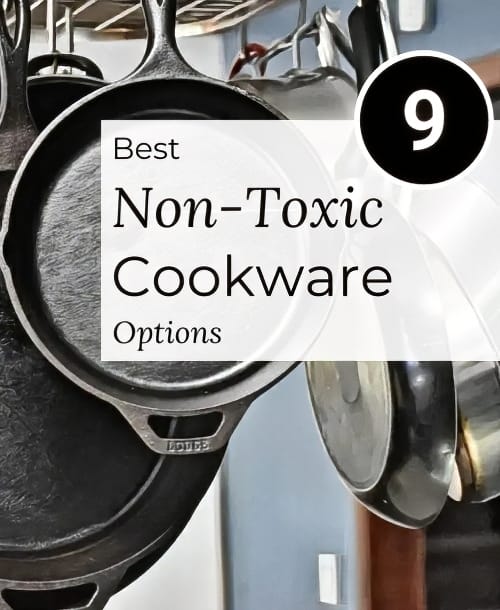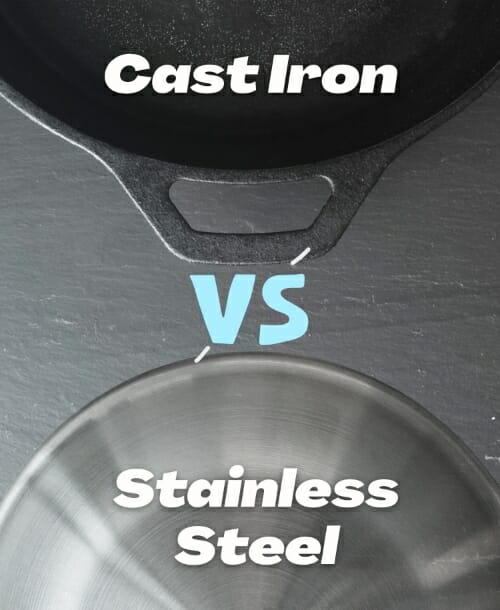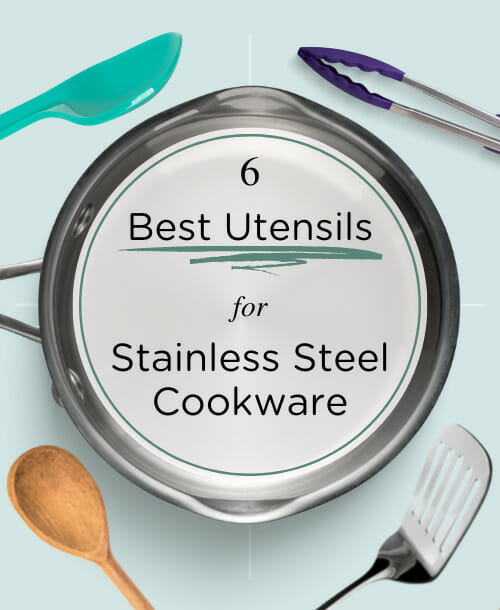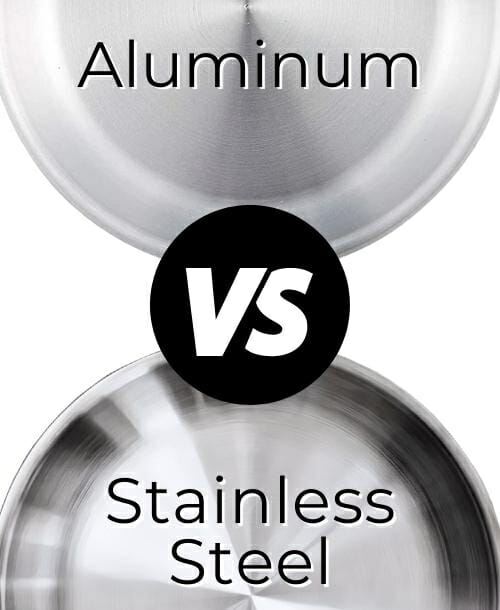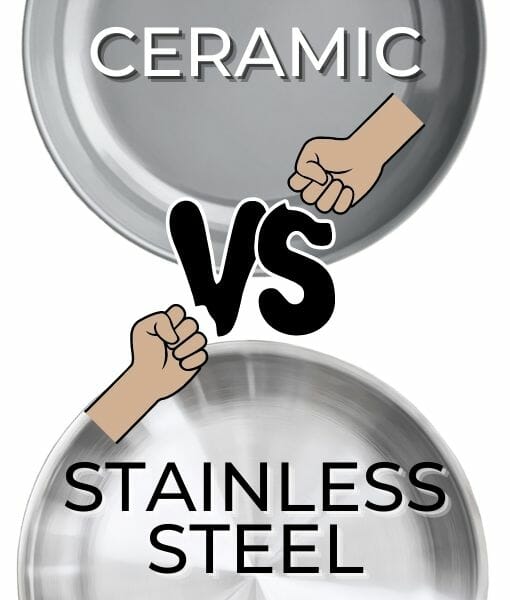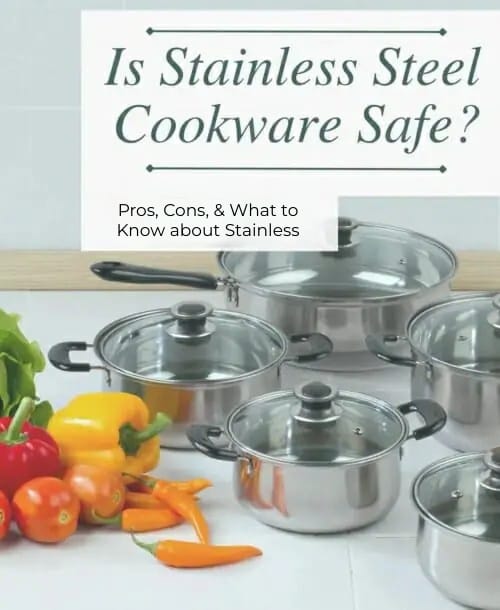
Stainless steel cookware is popular for home cooks because it’s durable, looks great, and resists rust. But is it safe for everyday cooking? Some worry about using stainless steel at high temperatures or with acidic foods.
That’s why, in this blog post, we dive deep into the safety of stainless steel cookware. We’ll answer common questions like:
- Can stainless steel leach harmful metals into your food?
- How safe is stainless steel compared to non-stick cookware?
- Are there special things to consider when cooking eggs, or if you think metal is leaching from your pans?
We’ll explore what stainless steel is made of, how it interacts with food, and how to use your steel pans safely and effectively.
Whether you’re a cooking pro or just starting, understanding the safety of stainless steel cookware is essential. It will help you make informed decisions about the tools you use to prepare healthy meals for yourself and your family.
Let’s dive in!
Medically-reviewed by Dr. Ahmad Alsayes, MBBS
What is Stainless Steel Cookware?
Stainless steel cookware is a popular choice for kitchens thanks to its durability and resistance to rust and corrosion. Here’s a breakdown of what makes it unique:
- Material Mix: Stainless steel is an alloy, meaning it’s a metal composed of several elements. The main ones are iron, chromium, and often nickel.
- Chromium’s Magic: Chromium is the key player. It reacts with oxygen to form a thin, invisible layer on the surface called chromium oxide. This layer protects the cookware from rust and staining, making it “stainless.”
- Nickel Strengthens: Nickel is another component that boosts the steel’s strength and corrosion resistance, improving longevity.
This combination of properties makes stainless steel cookware a safe and long-lasting choice.
Pros and Cons of Stainless Steel
Stainless steel’s remarkable safety and durability make it a favored option among many home chefs. Here’s a breakdown of its pros and cons to help you decide if it’s the right fit for your kitchen:

Pros
- Safety First: Stainless steel is non-toxic and doesn’t contain harmful PFAS chemicals like some non-stick pans.
- Flavor Keeper: Unlike cast iron, stainless steel is non-reactive. This means it won’t alter the taste of your food, making it perfect for dishes with acidic ingredients like tomatoes or citrus.
- Built to Last: Highly resistant to dents, scratches, and rust, stainless steel cookware is a durable investment that lasts for years.
- Easy Does It: While not truly non-stick, you can use a little oil on stainless steel for easy food release and cleaning. It’s also dishwasher-safe, though I recommend hand-washing to prevent a cloudy appearance.
- Eco-Conscious Choice: Stainless steel is 100% recyclable, making it a sustainable option for eco-friendly cooks.
Cons
- Price Tag: Stainless steel cookware can be more expensive upfront than other materials. However, its durability and safety benefits often outweigh the cost in the long run.
- Minimal Leaching: Although unlikely to harm most people, stainless steel might release trace amounts of nickel and chromium when used with acidic foods. However, this is generally safe unless you have specific allergies to one of these metals.
- Heating Up: Stainless steel itself isn’t the best heat conductor, leading to uneven cooking. Look for fully-clad cookware for optimal and consistent heat distribution.
Not sure if stainless steel is your perfect match? Check out these cookware guides for more in-depth comparisons before making your decision:
Stainless Steel Safety: A Reassurance
So, is stainless steel cookware safe?
Absolutely, stainless steel cookware is considered one of the safest choices for your kitchen. Here’s why:
- Non-Toxic Champion: The chromium in stainless steel forms a protective layer that prevents harmful substances from leaching into your food.
- Inert and Pure: Stainless steel doesn’t react with ingredients, so your meals retain flavor and avoid contamination.
- Easy Cleaning and Sanitizing: The non-porous surface minimizes metal leaching and makes cleaning a breeze.
A Note on Acidic Foods: While generally safe, very acidic or salty foods cooked for extended periods may cause minimal leaching of nickel and chromium. If this is a concern:
- Be Careful with Highly Acidic or Salty Foods: Limit lengthy cooking times for highly acidic or salty dishes. Opt for glass or ceramic cookware for slow-simmering recipes with lemon juice or vinegar.
- Nickel-Free Options: For those with nickel sensitivities, nickel-free stainless steel cookware is available, like this set.
Quality Matters: Damaged stainless steel is more likely to leach metals. So, invest in high-quality cookware from reputable brands that prioritize safety, such as All-Clad or Calphalon.
Look for grades 304, 316, or 18/10, indicating higher quality and corrosion resistance. Also, be gentle with metal utensils and regularly inspect your pans for wear and tear.
Considerations For Buying Safe Stainless Steel Cookware
Choosing the right stainless steel cookware involves understanding grades and construction methods:
Grades: Stainless steel grades break down by two numbers (e.g., 18/10 or 18/8). The first number represents chromium content, and the second indicates nickel content. Higher nickel content translates to better corrosion resistance, making it ideal for cookware. Generally, 18/10 is considered the safest and highest quality.
Construction: Look for fully-clad cookware, where conductive metals are layered throughout the pan up to the rim. While both main options (tri-ply and 5-ply) are safe, the layering impacts heat distribution:
- Tri-ply: Aluminum or copper core sandwiched between two stainless steel layers for even heat distribution and no hot spots. Tri-ply pans are usually cheaper than 5-ply, just note that they heat fast and make it easier to burn food.
- 5-ply: Stainless steel body with three alternating layers for increased heat retention and warp resistance. 5-ply is typically more expensive but worth it for its enhanced lifespan and heat retention, aiding food browning with reduced scorching/ sticking.
By understanding these factors, you can make an informed decision and choose the safest stainless steel cookware for your kitchen!
How To Use & Maintain Stainless Steel Cookware
Stainless steel cookware is an excellent choice for safety and durability, but proper use and care are essential. Here’s how to get the most out of your stainless steel pans while minimizing leaching risks:
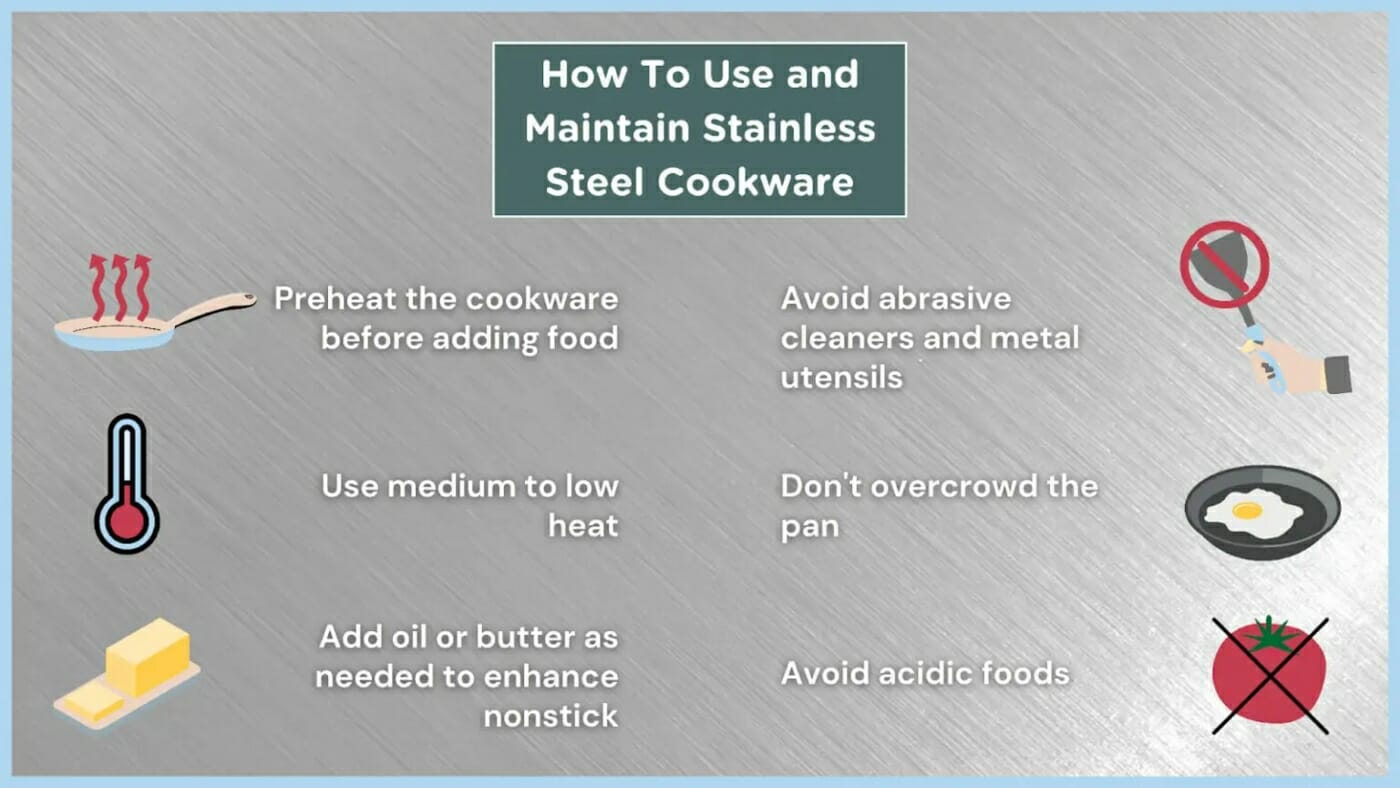
- Preheat for Even Cooking: Always preheat your pan to ensure even heat distribution and prevent sticking. For more on preventing sticking with stainless steel, visit our Non-Stick Alternatives Guide.
- Low and Slow Wins: Triple-ply stainless steel pans conduct heat well, so use medium to low heat settings for most tasks to avoid hot spots and potential scorching/ sticking.
- Fat is Your Friend: A little oil or butter enhances non-stick performance, especially for sticky foods.
- Clean Gently: Skip the harsh scrubbers! Mild dish soap, warm water, and a soft sponge or cloth will keep your pans shiny and long-lasting.
- Give Your Food Space: Don’t overcrowd the pan. This can drop the pan’s temperature, leading to uneven cooking and sticking.
- Use the Right Tools: Stick to wooden or silicone utensils to avoid scratches affecting the steel’s longevity and non-stick properties. Metal utensils, while safe on stainless steel, can cause damage. Use them gently. Read more: 6 Best Cooking Utensils for Stainless Steel Cookware.
- Minimize Acidic Cooking: While generally safe, limit cooking very acidic foods for extended periods to minimize potential nickel or chromium leaching. Opt for alternative cookware for these dishes if needed.
By following these simple tips, you can maximize your stainless steel pans’ safety, performance, and lifespan, making them reliable kitchen companions for years.
Frequently Asked Questions
What should you not cook in stainless steel?
Avoid cooking highly acidic foods, like tomato sauce or lemon-based dishes, in stainless steel for prolonged periods. Acidic ingredients can cause nickel and chromium to leach.
The Tolerable Upper Intake Levels (UL) for nickel—the highest level of daily intake known to cause no risk of adverse human health effects—is 1 mg/day. Yet, the majority of people consume 69-162 mg via food, including any leaching from cookware. That being said, people with pre-existing nickel hypersensitivity and kidney dysfunction are best advised to avoid cooking in stainless steel products. Instead, they may use non-reactive cookware like glass or ceramic.
Does stainless steel release toxins when heated?
Stainless steel is generally safe and does not release toxins when heated. High-quality stainless steel cookware is designed to resist corrosion and leaching, even at high temperatures, making it a safe option for cooking.
When should you throw away stainless steel pans?
Dispose of stainless steel pans if they’re severely damaged, such as when the bottom is warped (which prevents even heating), if deep scratches expose the core material, or if the pan is rusting. These conditions can impair cooking performance and potentially compromise the pan’s safety.
Is it better to use stainless steel or non-stick?
Choosing between stainless steel and non-stick depends on your cooking needs. Stainless steel is durable, versatile, and ideal for high-heat cooking. Non-stick is best for low to medium heat and easy food release with minimal oil. Consider what you cook most to decide which is better for you.
Can you cook eggs on stainless steel?
Yes, you can cook eggs on stainless steel with a few tips: Preheat the empty pan until water droplets dance on the surface. Then, add some oil or butter and let it heat for 10-20 seconds. Finally, add your eggs over the fats and you should see them slide around.
How do you know if your stainless steel cookware is releasing metals?
Observe any changes in color or the appearance of rust and corrosion, especially in scratched or damaged areas. Regularly inspect for pitting, which can increase metal release during cooking. If your cookware shows signs of wear, consider testing for metal residues in your food or replacing the items.
Is stainless steel safe for people with nickel allergies?
Choosing stainless steel pans with less (or zero) nickel content is essential for people with nickel allergies. 18/0 grade stainless steel contains no nickel, minimizing the risk of allergic reactions. Regular stainless contains nickel, which might concern those with severe allergies.
Final Thoughts
So, after our deep dive into stainless steel cookware safety, what’s the bottom line?
Stainless steel is a strong contender for your kitchen. It’s durable, resists rust, and offers a clear health advantage over other cookware options.
Choosing high-quality stainless steel, like 18/10 grade, ensures your cookware lasts for years and remains safe for cooking at high temperatures.
There are a few things to remember: be cautious with acidic foods, and if you have a nickel sensitivity, look for nickel-free options like Homi-Chef. But overall, stainless steel cookware is a safe and wise investment for most kitchens.
By prioritizing quality and considering your unique needs, you can enjoy all the benefits of stainless steel cookware without sacrificing safety. Now you can cook delicious meals with peace of mind!
P.S. While stainless steel is safe, other types of cookware aren’t. Explore our Non-Toxic Cookware Guide to see which pans to avoid, the safest materials to use, and top brand picks with reviews.
Lena Milton
Lena Milton is a freelance writer covering sustainability and environmental science. She graduated from Brown University, and today writes to help consumers understand the environmental and ethical challenges in everyday life so we can find viable solutions for both.
Related Posts

